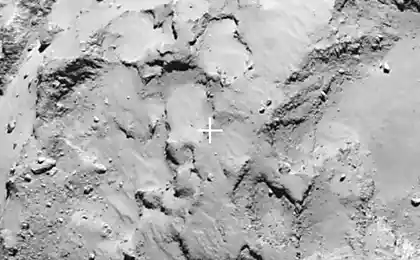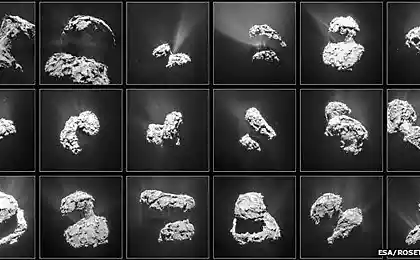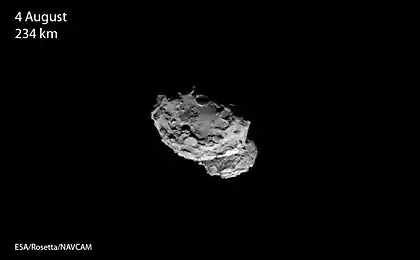779
Comet Churyumov-Gerasimenko noted the passage of the perihelion of fireworks

When you click a picture to open in full size i>
The moment of rapprochement with the Sun at the minimum distance of the perihelion passage, the comet Churyumov-Gerasimenko noted a kind of salute: gas and dust emission from its core. Emission discovered Rosetta, who sent photos and the activity of the comet to Earth. Comet passed perihelion on Thursday, is now a heavenly body gradually starts to move away from the sun to make the new turn around the world (the period of the comet - 6, 5 years).
Earlier, the comet Churyumov-Gerasimenko demonstrated quite high activity during the approach to the sun. Activity showed a large amount of gas and dust emissions. All this фиксировалось Station Rosetta , and scientists received unique data over many months. Some data is transferred and the probe Philae, which, despite not being the most successful landing, yet practically fulfilled its scientific mission.
It is worth noting that the comet will still be active for a long time, and emissions, similar to those already recorded, may occur repeatedly.
July 29 Rosetta observed the most significant release, recorded by several scientific instruments station at a distance of 186 km from the comet. Emission was also photographed and these images were on Earth. Tools Rosetta also recorded some changes in the structure and composition of the gaseous coma surrounding the comet's nucleus, and the unit reported a significant increase in the concentration of dust around the comet.

The release of even affected the solar wind and its magnetic field
OSIRIS instrument was able to get the image output, which emerged near the "neck" of the comet, in the region Anuket. It can be seen in the image obtained in the 13:24 GMT, on the other image obtained 18 minutes before, the release yet. The flow rate of emission is estimated at least 10 m / s, most likely rate was even higher.
"It was the brightest emissions on record" - said Garst Gutter, OSIRIS team member of the Max Planck Institute.
Source: geektimes.ru/post/260100/






















